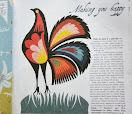On Sunday 23 May we visited Warren and Lois Agnew at their home in Scott's Landing and found out about Warren's inventive tunnels that monitor animals living in an area.
Warren speaking to KCC children
From his comprehensive library of prints a great deal of knowledge about animal prints is now known, and individual animals can be identified by their prints. Some of the interesting facts Warren shared were:
- Rats' front and rear feet are the same width
- Ferrets have a U shaped pad
- The giant weta has a 1cm long foot
- Male stoats hind feet are 10% wider than the female
With better understanding of mammal tracks, male and female prints can be identified, as well as individual animals.
Warren had many stories to tell about the prints which have been collected, e.g. the mice tracks in the cafeteria at the Wharves, the single rat which was identified on Mokoia Island and the local stoat roaming through a number of tunnels. We heard about an exciting new development where the tunnels are about the be deployed with Vitamin D3 for pest control. This will work with an aerosol spray delivering 3ml of the Vitamin D to an animal large enough to activate two sensors simultaneously. The animal will die within 4 days and the Vitamin D will not be harmful in the food chain.
Then it was out in to the garden to find the tunnels and collect the cards.
Finlay and Patrick
Talia Leah
The outcome was a lot of mice prints! Warren showed the children how the prints could be examined with his microscope.
Warren showing the prints on his microscope
Then we moved on to talking about bugs. Lois helped children create bug tracks with insects which had been collected for the purpose. These included praying mantis, a stink bug, Lauren's skink and Talia's cockroach.
Lois helping children make bug prints
John looking at the Weta house
Other highlights were Lois's fresh pikelets, seeing the Tank Vacuum in action, and the weta house. The to cap it all off each family received a tunnels and cards to set up in their own garden, and mice tracks have already been recorded.








